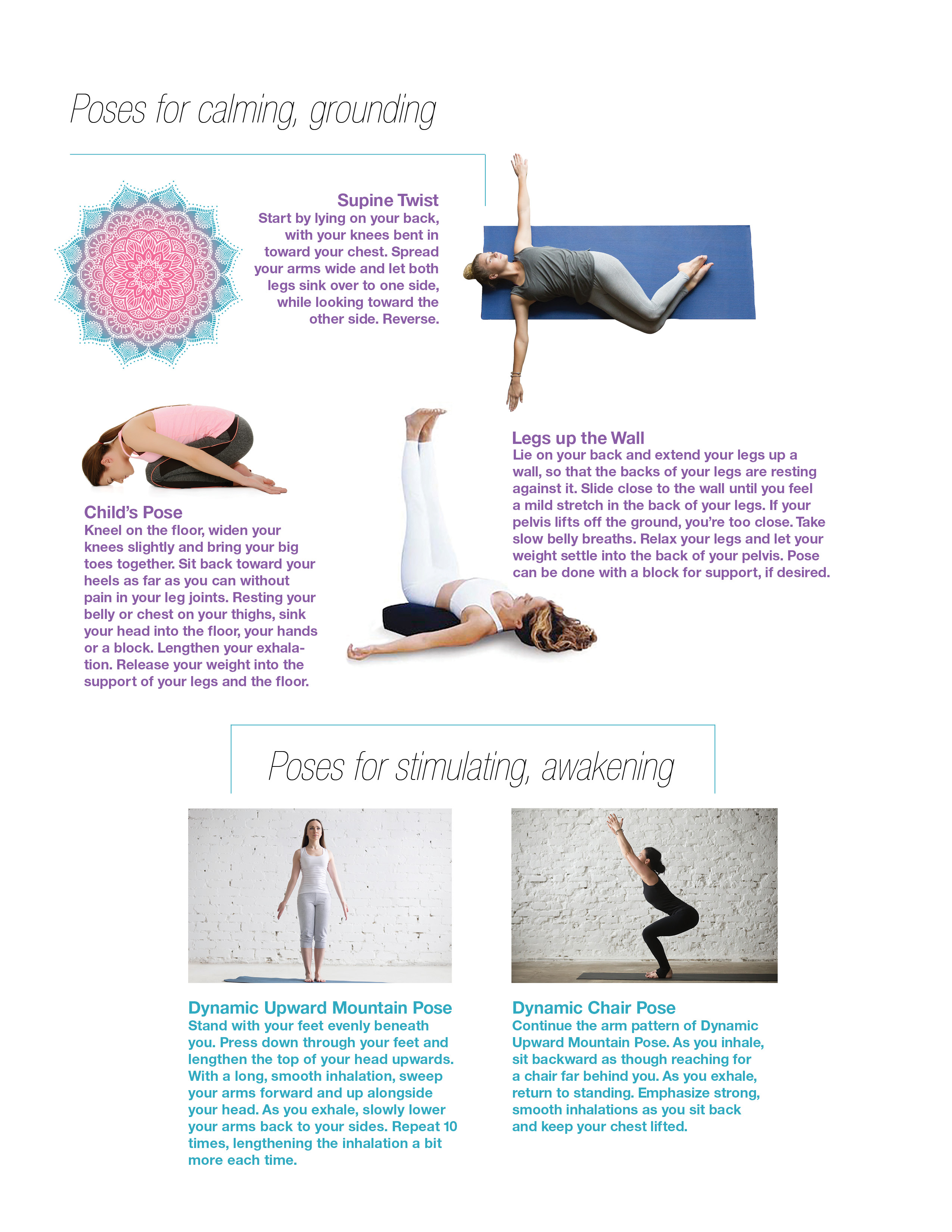Therapeutic yoga provides relief for body and mind
Therapeutic yoga is nothing new for Lisa Clarke.
Clarke, 63, has spent the past 10 years stretching her body and clearing her mind during one-on-one sessions with Lela Beem, co-owner of Grateful Yoga in Evanston. And when Clarke was diagnosed with breast cancer in 2017, she used therapeutic yoga to help cope.
“[Beem] made me feel as if I was in control of my own body, rather than the radiation or the pills or the doctors,” says Clarke, who asked that her real name not be used. “She was able to help me find my center, and she gave me such an awareness of my own body.”
That, at its most basic level, is the power of therapeutic yoga, Beem says.
Unlike a general yoga class, therapeutic yoga focuses on a client’s need to reduce or manage their symptoms, to improve their function or to ease a natural process, such as pregnancy or menopause.
“Therapeutic yoga is where you are using yoga postures, breathing practices, meditation techniques or yoga philosophy in a way that is applicable to the population or client you’re working with,” Beem says. She adds that the relationship between teacher and client is another important component of therapeutic yoga. “It’s not a one-size-fits-all approach.”
Therapeutic yoga can be performed in one-on-one sessions or in a group setting. Often in group sessions individuals have something in common, such as pregnancy or osteoporosis.
Beem and her husband, Nick, opened Grateful Yoga in 2005. The goal was to make sure anyone felt welcome, no matter their physical or mental condition.
“Two things that have kept us engaged are focusing on how we can make it a meaningful experience that’s tailored to people’s individual needs and [how we can make it] accessible,” Beem says. “Every individual is unique, and we welcome that.”
Benefits of yoga therapy
Therapeutic yoga doesn’t always have to be used for dealing with trauma or a medical condition — there are countless benefits for individuals who are already in shape and in a mentally stable place. Take Debbie Mellinger, for example. The 63-year-old Evanston resident rides her bike more than 1,000 miles every year, but for a long time she struggled with how to achieve the same physical activity and mental satisfaction during winter, when outdoor biking isn’t an option.
After her first therapeutic yoga session, she discovered that yoga could not only keep her body limber, but also clear her mind and reduce stress in ways she never imagined.
“We spent so much time on breathing and thinking about breath and where it went in the body,” Mellinger says. “I was hooked.”
Part of what makes therapeutic yoga so beneficial is that it helps get people moving toward a state of equilibrium, something other therapies aren’t always able to accomplish, Nick Beem says.
“A lot of the challenges people find themselves facing are complex and have multiple causes, such that seeing only a doctor, therapist or physical therapist doesn’t quite reach the root causes of suffering. Yoga therapy exists in the intersection between these different specialties.”
When Clarke was diagnosed with breast cancer, she interacted with all of those specialties, but she credits yoga therapy as being the one that most impacted.
“Having the ability to find your center — it changes you,” Clarke says. “It changes your day. It changes your week. It changes your life.”











